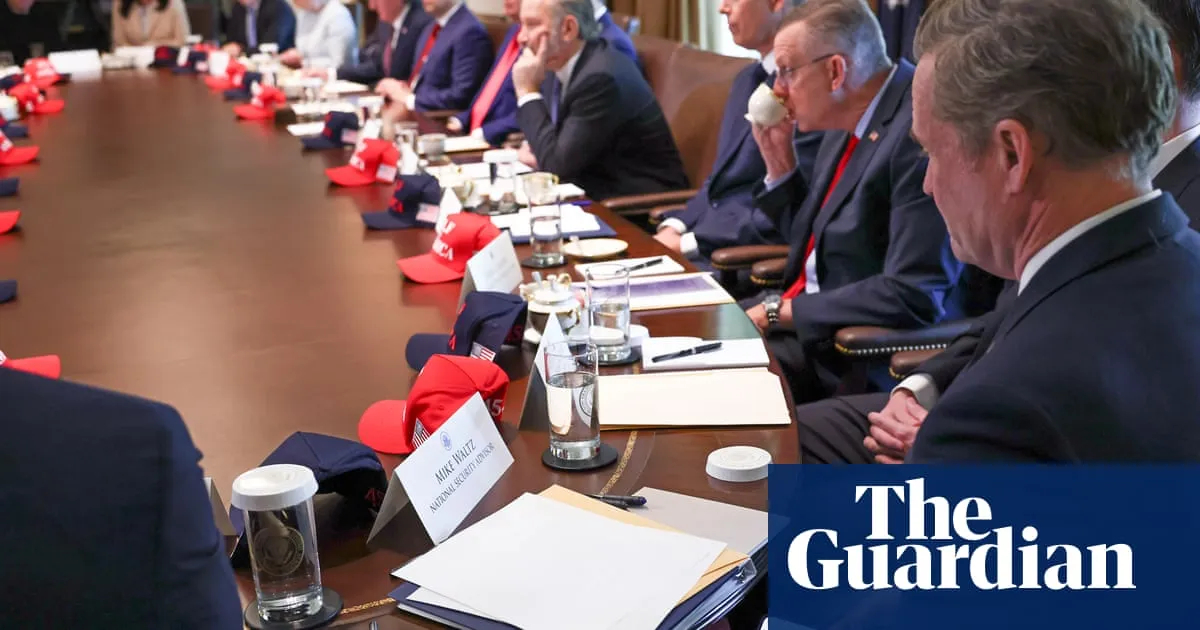
Recent photographs taken during Donald Trump’s cabinet meeting have unveiled a concerning trend among top White House officials regarding their communication methods. It appears they are now utilizing an even less secure version of the Signal messaging app, which was previously at the center of a significant national security scandal just last month. These images, captured by Reuters on Wednesday, show the phone screen of Mike Waltz, the former national security adviser who was recently ousted after a blunder that included a journalist in a group chat discussing sensitive operational plans.
The group chat that led to Waltz's dismissal involved high-level discussions about U.S. military actions in Yemen, which were subsequently executed as outlined in the messages. In the newly released photographs, Waltz's screen reveals exchanges with notable figures including JD Vance, the vice president; Marco Rubio, who has replaced Waltz as the acting national security adviser; Tulsi Gabbard, the director of national intelligence; and Steve Witkoff, the president’s special envoy for the Middle East, who is instrumental in negotiations concerning the ongoing war in Ukraine.
The chat application being used by Waltz appears to be a modified variant of Signal, branded as TM SGNL. This version is produced by a company that specializes in cloning popular messaging apps while adding features that allow for message retention and archiving. The use of this modified app may be an attempt by White House officials to adhere to legal requirements that mandate the preservation of presidential records.
As reported by 404 Media, this new messaging software raises serious questions regarding the security of communications. The app’s archiving feature suggests that the end-to-end encryption, which is a hallmark of the original Signal app for secure communication, may not be fully upheld. The potential for messages to be stored and retrieved elsewhere could compromise the privacy that many users rely on.
The photographs do not reveal extensive details of the conversations taking place on Waltz’s phone. However, one visible message directed to "Rubio" mentions, “there is time,” while another from "Vance" states, “I have confirmation from my counterpart it’s turned off. He is going to be here in … ” Additionally, evidence suggests that Waltz utilized Signal for a call with Gabbard and that his phone’s calendar indicated an 8 a.m. meeting for the “PDB,” likely referring to the President's Daily Brief.
On Thursday, prior to the widespread dissemination of these photographs, President Trump made a significant leadership change by removing Waltz from his role as national security adviser. Waltz has been assigned as the UN ambassador, with Rubio stepping in as the interim national security adviser. When approached for comments about the photographs, a White House spokesperson affirmed to the Washington Post that, “As we have said many times, Signal is an approved app for government use and is loaded on government phones.”
These developments highlight the ongoing complexities and challenges faced by government officials in maintaining secure communications while adhering to legal protocols. The implications of using modified messaging applications in sensitive discussions raise critical concerns that warrant further scrutiny.